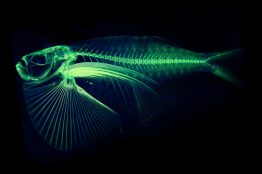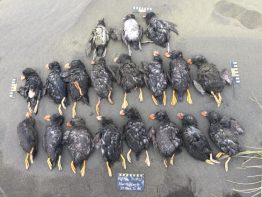How much can you really learn from a dead herring in a jar? Housed in the UW College of the Environment, the Burke Museum’s Ichthyology Collection is home to more than 13 million preserved fish specimens from around the world, many dating back over a century. By far the largest collection of its kind in North America, it includes over 300 different samples of Pacific herring — an ideal species for researchers aiming to look back in time.
Read more »Corey Garza
Read more »
A Q&A with Corey Garza, UW Environment Associate Dean for Diversity, Equity and Inclusion
Corey Garza begins his tenure as the UW College of the Environment Associate Dean for Diversity, Equity and Inclusion, and as a Professor of Aquatic and Fishery Sciences effective September 1. We sat down with Garza to talk about the vision for his new role, his approach to advancing equity and inclusion, and what he ultimately hopes to achieve. What appeals to you most about coming to the College of the Environment to lead DEI efforts?
Read more »Marine heat waves caused mass seabird die-offs, beach surveys show
Seabirds, from cormorants to puffins, spend most of their lives at sea. Beloved by birdwatchers, these animals can be hard to study because they spend so much time far from shore. New research led by the University of Washington uses data collected by coastal residents along beaches from central California to Alaska to understand how seabirds have fared in recent decades.
Read more at UW Today »Q&A: Two ways UW researchers are studying marine microplastics
Tiny pieces of plastic in the ocean might seem innocuous on their own, but their growing presence is a frustrating issue facing marine ecosystems. The particles’ small size makes them difficult to clean up, and it also allows them to easily burrow into marine environments or even get ingested by ocean organisms. Two University of Washington researchers are using very different methods to investigate the issue of marine microplastics.
Read more at UW News »




